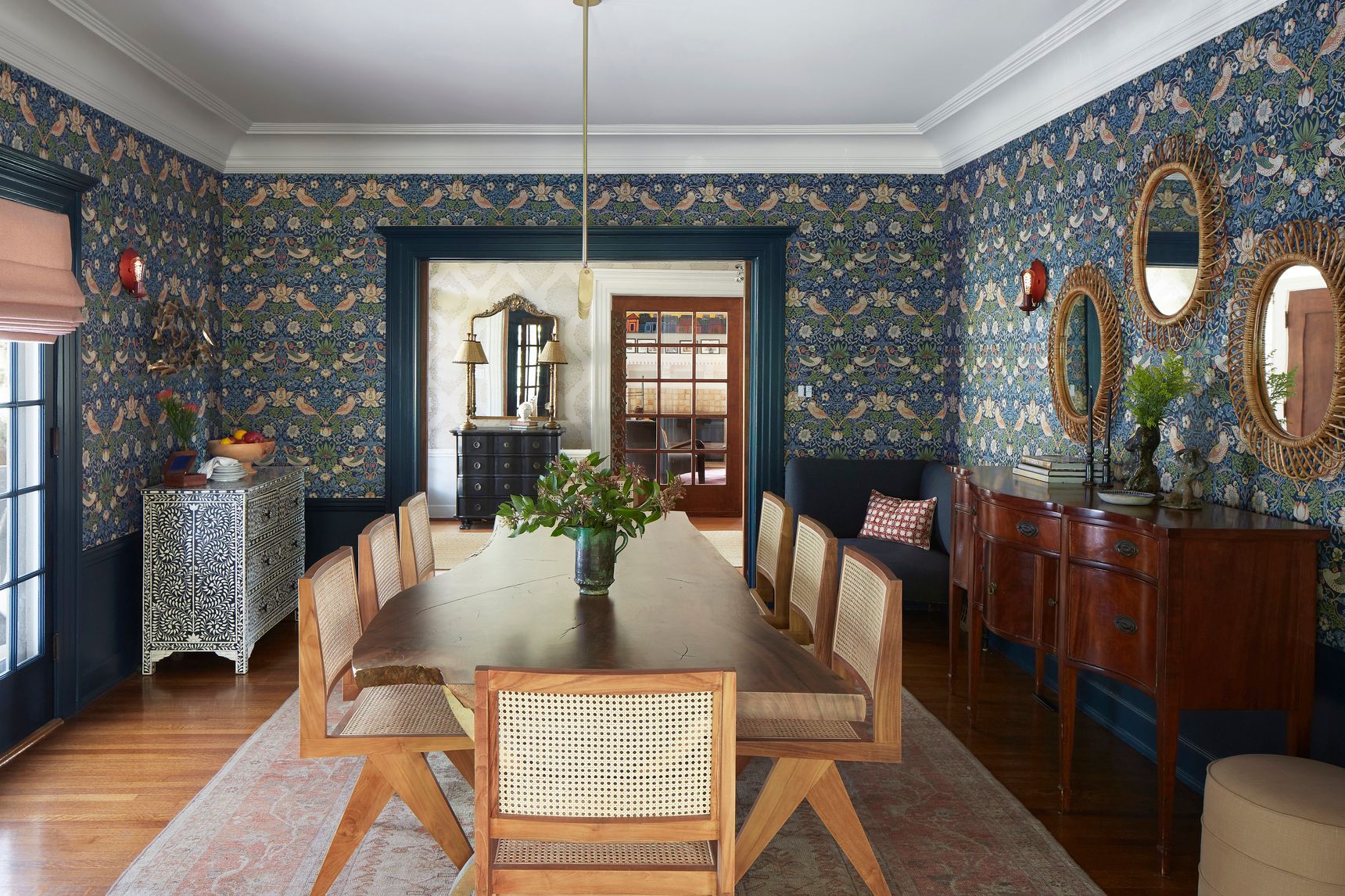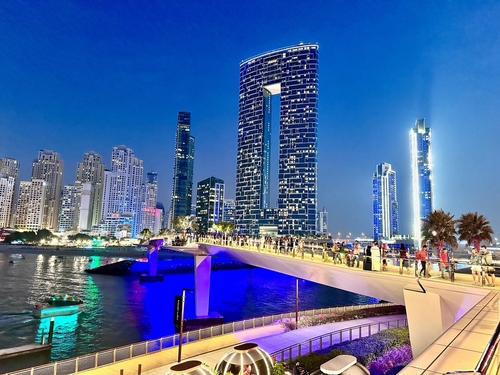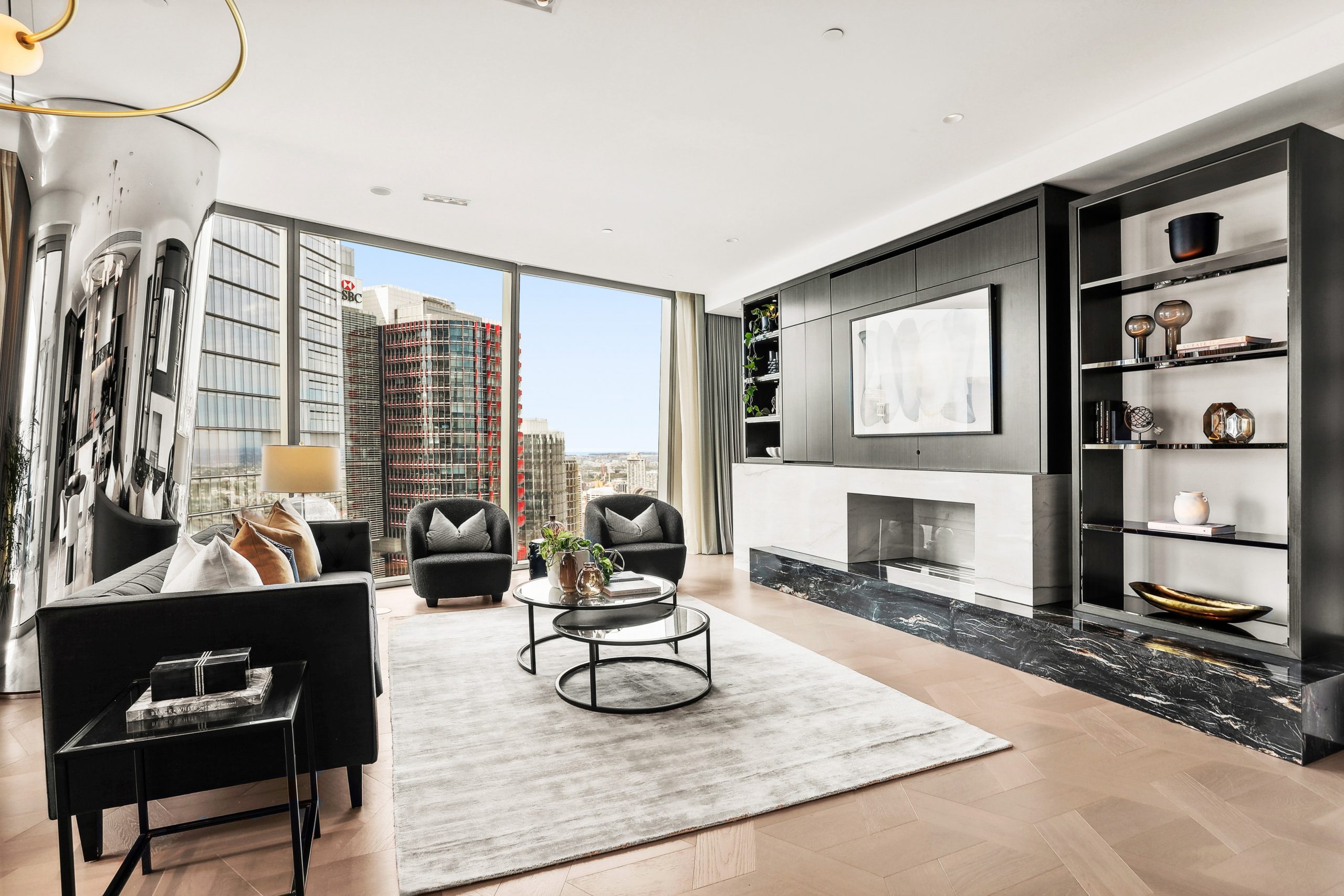The Secret to Mixing Pattern, Colour, Old and New
Here’s how the interior designer got it done.
FORMAL BUT but whimsical, the dining room in Chris Barnes and Maisha Closson’s home in Los Angeles’s West Adams neighbourhood bursts with wildly disparate design references. How did local designer Dee Murphy, founder of Murphy Deesign, convince a wavy-fronted mahogany buffet to coexist with chairs as rigidly linear as Pierre Jeanneret’s 1950s designs; a live-edge dining table with an antique Turkish oushak rug? Shouldn’t the mix be as jarring as it sounds? Expert layering, said Ms. Murphy, comes of pairing hues, materials and shapes, not periods. “Anything that has history and has stood the test of time, those pieces you can always use no matter what,” she said.
The aesthetic glue that unifies the dining room’s seemingly random components begins with the choice of William Morris’s Strawberry Thief wallpaper. The Arts and Crafts pattern, from 1883, features rhythmic flourishes of flora and fauna in enthusiastic colours. Its rich blues and luscious pops of berry red led Ms. Murphy to choose pieces with companionable hues and forms. “When I look at this room, what’s really tying it in and calming it down is the paint, wallpaper, window treatments and rug. Those were the base pieces, the starting off points.”
Here, the other decisions that helped this obstreperous collection of elements cohere.
Botanical Engineering
Ms. Murphy admits she would normally set the finely detailed Indian chests against a less hectic, larger-scale wallpaper pattern. “But there was something about these chests and the black-and-white nature that felt neutral enough with a paper that’s just as busy,” she said. The camel-bone inlay, which depicts flat-petaled blossoms and spirals of climbing plants, also helps the little dressers jibe with the wall covering. Just as you can use a consistent palette to make a motley assortment of elements feel familial, she said, “you can use consistent themes to tie pieces in.” Scalloped-edge sconces from Nickey Kehoe allude to the red berries in the print, and the painting’s lyrical arches and colour palette similarly reinforce the motifs of the paper.
Dissonance and Harmony
The brass base of the walnut-wood dining table has been fashioned into a butterfly, or wishbone, shape. “It’s about a contrast, right? And a tension,” explained the designer. “The table slab has a more masculine feel because it’s big, it’s heavy, it’s wood. Then, you have the curves of the legs supporting it, and that’s more feminine.” An industrial or hefty base would have been much more predictable and created a cluster of angled legs. The modernist chairs and boho mirrors, meanwhile, respectively masculine and feminine, resolve their tension via matching organic materials: cane and wicker. “It’s very subtle, but it’s something that a discerning eye can pick out,” said Ms. Murphy. “There’s a reason why it feels fluid.”
Curve Balls and Line Drives
Interior designer Dee Murphy carefully weighed the formal qualities of the furnishings she included in the dining room of this home in the West Adams neighbourhood of Los Angeles. “Most rooms are square or rectangular, so you want to offset that and put some beautiful, curvy movement into the room,” she said. The undulating wallpaper pattern, the bow-front Federal-style sideboard, the looping wicker mirror frames, all contribute roundness. At the same time, angles and lines are needed to create dissonance. The sharply edged chairs were an inspired addition to the heart of the dining room, as was the slender, horizontal contemporary chandelier. Of her decision to hang a series of three petite mirrors from France she explained that repeating a single object allows you to make a statement but stops short of being garish. “If I had tried to add in a vintage, French, gilt gold mirror, that would have taken that moment a little too over the top.”
 Copyright 2020, Dow Jones & Company, Inc. All Rights Reserved Worldwide. LEARN MORE
Copyright 2020, Dow Jones & Company, Inc. All Rights Reserved Worldwide. LEARN MORE
This stylish family home combines a classic palette and finishes with a flexible floorplan
Just 55 minutes from Sydney, make this your creative getaway located in the majestic Hawkesbury region.
As Paris makes its final preparations for the Olympic games, its residents are busy with their own—packing their suitcases, confirming their reservations, and getting out of town.
Worried about the hordes of crowds and overall chaos the Olympics could bring, Parisians are fleeing the city in droves and inundating resort cities around the country. Hotels and holiday rentals in some of France’s most popular vacation destinations—from the French Riviera in the south to the beaches of Normandy in the north—say they are expecting massive crowds this year in advance of the Olympics. The games will run from July 26-Aug. 1.
“It’s already a major holiday season for us, and beyond that, we have the Olympics,” says Stéphane Personeni, general manager of the Lily of the Valley hotel in Saint Tropez. “People began booking early this year.”
Personeni’s hotel typically has no issues filling its rooms each summer—by May of each year, the luxury hotel typically finds itself completely booked out for the months of July and August. But this year, the 53-room hotel began filling up for summer reservations in February.
“We told our regular guests that everything—hotels, apartments, villas—are going to be hard to find this summer,” Personeni says. His neighbours around Saint Tropez say they’re similarly booked up.
As of March, the online marketplace Gens de Confiance (“Trusted People”), saw a 50% increase in reservations from Parisians seeking vacation rentals outside the capital during the Olympics.
Already, August is a popular vacation time for the French. With a minimum of five weeks of vacation mandated by law, many decide to take the entire month off, renting out villas in beachside destinations for longer periods.
But beyond the typical August travel, the Olympics are having a real impact, says Bertille Marchal, a spokesperson for Gens de Confiance.
“We’ve seen nearly three times more reservations for the dates of the Olympics than the following two weeks,” Marchal says. “The increase is definitely linked to the Olympic Games.”

Getty Images
According to the site, the most sought-out vacation destinations are Morbihan and Loire-Atlantique, a seaside region in the northwest; le Var, a coastal area within the southeast of France along the Côte d’Azur; and the island of Corsica in the Mediterranean.
Meanwhile, the Olympics haven’t necessarily been a boon to foreign tourism in the country. Many tourists who might have otherwise come to France are avoiding it this year in favour of other European capitals. In Paris, demand for stays at high-end hotels has collapsed, with bookings down 50% in July compared to last year, according to UMIH Prestige, which represents hotels charging at least €800 ($865) a night for rooms.
Earlier this year, high-end restaurants and concierges said the Olympics might even be an opportunity to score a hard-get-seat at the city’s fine dining.
In the Occitanie region in southwest France, the overall number of reservations this summer hasn’t changed much from last year, says Vincent Gare, president of the regional tourism committee there.
“But looking further at the numbers, we do see an increase in the clientele coming from the Paris region,” Gare told Le Figaro, noting that the increase in reservations has fallen directly on the dates of the Olympic games.
Michel Barré, a retiree living in Paris’s Le Marais neighbourhood, is one of those opting for the beach rather than the opening ceremony. In January, he booked a stay in Normandy for two weeks.
“Even though it’s a major European capital, Paris is still a small city—it’s a massive effort to host all of these events,” Barré says. “The Olympics are going to be a mess.”
More than anything, he just wants some calm after an event-filled summer in Paris, which just before the Olympics experienced the drama of a snap election called by Macron.
“It’s been a hectic summer here,” he says.

AFP via Getty Images
Parisians—Barré included—feel that the city, by over-catering to its tourists, is driving out many residents.
Parts of the Seine—usually one of the most popular summertime hangout spots —have been closed off for weeks as the city installs bleachers and Olympics signage. In certain neighbourhoods, residents will need to scan a QR code with police to access their own apartments. And from the Olympics to Sept. 8, Paris is nearly doubling the price of transit tickets from €2.15 to €4 per ride.
The city’s clear willingness to capitalise on its tourists has motivated some residents to do the same. In March, the number of active Airbnb listings in Paris reached an all-time high as hosts rushed to list their apartments. Listings grew 40% from the same time last year, according to the company.
With their regular clients taking off, Parisian restaurants and merchants are complaining that business is down.
“Are there any Parisians left in Paris?” Alaine Fontaine, president of the restaurant industry association, told the radio station Franceinfo on Sunday. “For the last three weeks, there haven’t been any here.”
Still, for all the talk of those leaving, there are plenty who have decided to stick around.
Jay Swanson, an American expat and YouTuber, can’t imagine leaving during the Olympics—he secured his tickets to see ping pong and volleyball last year. He’s also less concerned about the crowds and road closures than others, having just put together a series of videos explaining how to navigate Paris during the games.
“It’s been 100 years since the Games came to Paris; when else will we get a chance to host the world like this?” Swanson says. “So many Parisians are leaving and tourism is down, so not only will it be quiet but the only people left will be here for a party.”
This stylish family home combines a classic palette and finishes with a flexible floorplan
Just 55 minutes from Sydney, make this your creative getaway located in the majestic Hawkesbury region.






















